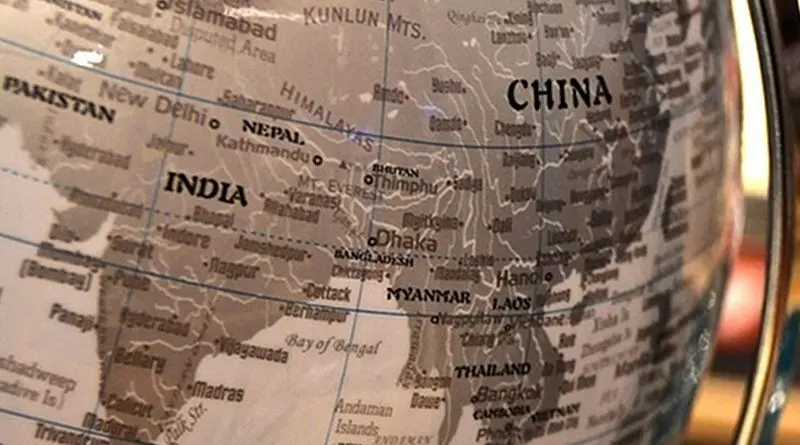Changing Contours Of South Asia – Analysis
The South Asian balance of power is in transition due to the changing contours of US policy in South Asia and the growing relationship between India and the US. The response is to strengthen ties between Pakistan and China. Russia’s role in the region will play as a catalyst to further shape the regional power configuration as the world moves towards multi-polarity.
During the post-era, India’s stance toward the U.S. changed as the U.S. emerged as the only super power in the international system after the U.S. disintegrated. India followed the classic Kuatilian philosophy of pacification and alliance with the sole super-of the international system under the prevailing wave of uni-.polarity. Indo-US defense cooperation was transformed into a strategic partnership in 2005 due to the convergence of key regional issues, particularly Afghanistan.
In recent years, the US has granted India a nuclear waiver in nuclear trade as a gesture towards the recognition of India as a semi-legitimate nuclear power. After this stimulus, India reached a milestone in the nuclear export control regime by signing key multilateral nuclear trade agreements, including the Australia Group 2018, the MTCR (Missile Technology Control Regime) 2016 and the Wassenaar Group 2017. The NSG (Nuclear Supplier Group) is the only left-wing multilateral treaty to become a functional part of the multilateral regime for export control of nuclear materials.
This strategic Indo-US partnership has been strengthened for two main reasons. First, India’s lucrative market economy is the best trading option for the US, as India has had a seven per cent consecutive growth rate since 1980. Second, Indian defense trade and military hardware acquisition policy toward the U.S. is beneficial to the U.S. military industrial complex (MIC) which, in turn, lobby India at the U.S. Congress and Pentagon.
India acquired $15 billion in arms from 2005 to 2015, while India emerged as the world’s top arms importer by surpassing China in 2015. This military procurement and trade policy has a positive balance of payments in the interest of the USA. In return for this favorable trade exchange with the US, India is seeking political leverage at international fora and strategic space in Afghanistan.
This tradeoff is equally beneficial to India. India is seeking political leverage in Afghanistan’s international fora and strategic space in return for this favorable trade exchange with the US. After 2008, the US policy in South Asia became a supporter of India’s nuclear cooperation agreement, particularly on critical issues, including Kashmir and cross-border terrorism in the region.
This imbalance in the US approach to South Asia has serious security implications for Pakistan. The relevance of Indian military modernization has increased the political efforts of the foreign and security policy. This military modernization has changed India’s national power equation, which will have profound implications for the changing balance of power in South Asia and the global transition of power. The increased pace of this military modernization with available finances has resulted in more assertive foreign policy behavior from India. While, Indian defense-budget for the fiscal year 2020-2021 is following:
Figure: 1

Table 1: Revenue and Capital Expenditure of Army, Navy and Air Force, 2020-21
| Army | Navy | Air Force | |
| Revenue Expenditure (Rs in Crore) | 1,46,941 | 22,935 | 29,963 |
| Capital Expenditure (Rs in Crore) | 32,474 | 26,688 | 43,282 |
| Total (Rs in Crore) | 1,79,415 | 49,623 | 73,245 |
| Revenue Expenditure as % of Total | 82 | 46 | 41 |
| Capital Expenditure as % of Total | 18 | 54 | 59 |
Source: https://idsa.in/issuebrief/india-def-budget-2020-21-lkbehera-040220
This changing balance of power has a depleting effect on South Asia’s strategic stability, which has security implications for Pakistan. India has tried to pursue a dual-trade policy in order to convince the international community that freedom of movement in Kashmir and other insurgents in India are terrorist movements. India wants to use the political and economic support of the international community as a tool to crush these movements through the use of force that is a security challenge for India.
Since 2001, India has used its multi-faceted diplomacy as a tool to portray Pakistan as a terrorist and pariah state before the international community in order to convince the world to support India’s pre-emptive doctrine of war against Pakistan.
In the context of the 2004 Cold-Start Doctrine, India has planned a strategy of pre-emptive war against Pakistan, often referred to as a limited doctrine of war. This cold-start doctrine was revised in 2014 and further revised in 2016 in order to make it more offensive and punitive. Surgical strikes as a war option is an addition to the Indian military doctrine of 2017.
Indian disputed claims of a surgical strike against Pakistan in 2016 and 2018 are part of this strategy to pressurize Pakistan and raise awareness among the global community. Pakistan has vigorously refuted these Indian claims.
Rather, Pakistan has adopted full spectrum deterrence doctrine as a counterbalancing effort against India’s changing security strategy to thwart Indian aggression across the Kashmir Control Line. These emerging patterns reflect depleting strategic stability and instigated armed race as major outcomes in South Asia.
Pakistan needs to skillfully launch diplomatic efforts to garner support from friendly regional states, in particular the KSA, Turkey, Iran, China and Russia, to spread India’s prograde isolation of Pakistan by drawing up a regional political settlement solution in Afghanistan especially after US-Taliban peace deal Feb-2020.
About the Author: Rana Danish Nisar is a PhD (International Relations) Student at the School of Politics and International Studies (SPIS). He holds Mphil in (International Relations), Masters in (Pakistan Studies), and Masters in (International Relations) degrees. He won acceptance Harvard Project for Asian and International Relations HPAIR (USA), 2017. His research interests are broadly in South Asian Affairs, South Asia Geo-Politics, US and South Asia, Indian Ocean, Security studies, South Asian developments studies

